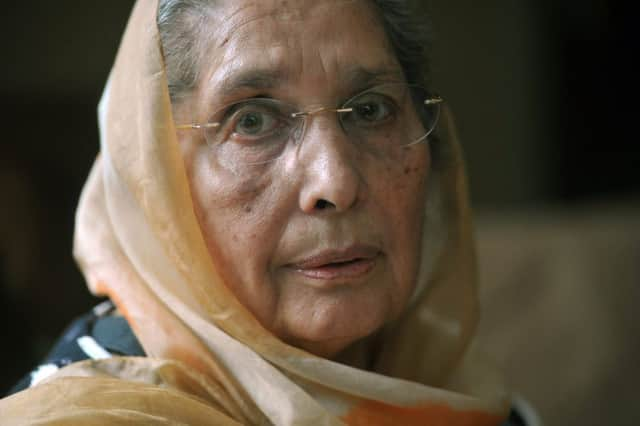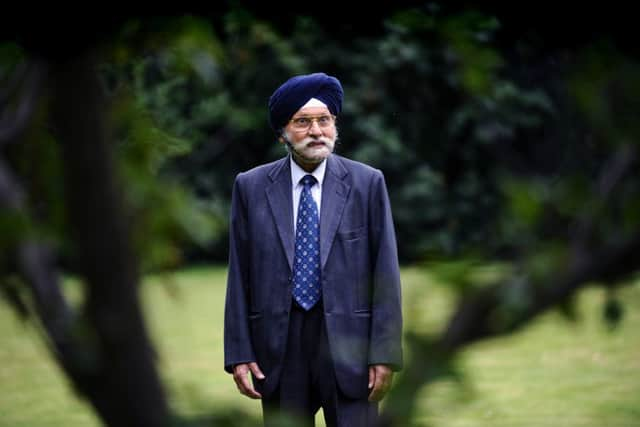The Partition of India - Bearing witness to history


“At the stroke of the midnight hour, when the world sleeps, India will wake up to life and freedom.” So said India’s first Prime Minister Jawaharlal Nehru in a famous speech he gave on the eve of independence.
His emotive words captured the spirit of optimism that many people felt about the country’s future as it finally broke free from the shackles of the British Empire. But rather than ushering in a bright new beginning what followed the Partition of India, on August 15, 1947, was anything but peaceful.
Advertisement
Hide AdAdvertisement
Hide AdOne million died and as many as 15 million were displaced as Muslims fled to Pakistan, and Hindus and Sikhs headed in the opposite direction. This was the dark side of the independence story, one riven by sectarian violence and bloodshed and which until recently was in danger of becoming little more than a footnote in the pages of 20th Century history.


For those families caught on the wrong side of the boundary – what became known as the ‘Radcliffe Line’, named after the British lawyer tasked with dividing British-ruled India into the new independent nations of India and Pakistan – it meant upheaval, turmoil and possibly even death.
Parkash Samra, 86, was a teenager when India gained its independence and was living with her Sikh family in a city called Kapurthala in Punjab. She recalls that the sectarian violence and unrest started in the months leading up to Partition.
“I was at school when it all started. We never thought anything like this could happen. Some of the Muslim girls were my friends, we lived together and went to school together and when they celebrated Eid we joined them and when we celebrated Diwali they came to us.
Advertisement
Hide AdAdvertisement
Hide Ad“But then everything changed. News started coming from Pakistan that people were being murdered and the Muslims who lived in our community had to leave. Everyone was crying and people were scared. It was horrible,” she says.


“Some girls from our school were taken away and single girls were taken from their homes and became slaves, they were branded like cattle.”
Across India there were stories of teenage girls being kidnapped and raped. Some were rescued but many others were murdered and their bodies never recovered. Some of the girls were so desperate they took their own lives rather than face the prospect of being raped.
Her aunt’s son was among those killed in the violence after being attacked by a mob. “He was only in his 20s and had just got married, and after his death his mother hardly ever spoke again.”
Advertisement
Hide AdAdvertisement
Hide AdThere were, however, some communities that refused to be ripped apart by religious animosity and for all the harrowing stories there are others of selflessness and courage.
Parkash says her father, who was an Indian army officer, helped protect Muslim workers from being attacked by gangs. “We had a farm and my father hid the Muslim workers who worked there to stop them from being attacked by the villagers.”
She says he risked his own life by escorting thousands of Muslims to the safety of refugee camps and the Pakistani border. “He had seen what was happening and he tried to save as many people as he could.”
Parkash came to the UK in 1961 and settled in Huddersfield where she became the first Indian woman to work in the local textile mills before going on to set up her own fashion business.
Advertisement
Hide AdAdvertisement
Hide AdLooking back at the bloodshed that followed Indian independence she says the legacy of Partition runs deep as do the psychological scars. “There was cruelty on both sides and seventy years later some people have still not recovered from what happened.
“It affected everyone, whether you had to leave your home or whether you stayed put. Some families lost everything. People left thinking they would come back one day, but they never did.”
Kartar Singh Kathuria, 80, was just 10 years old at the time of Partition. He lived with his family in Sheikhupura, a district in what is now Pakistan, but until then had been part of India.
He and his family were visiting his grandparents around the time of independence. “During holidays we would go there and we were with them when Partition happened. The area was cut off and people were scared,” he says.
Advertisement
Hide AdAdvertisement
Hide AdUp until this point Hindus, Sikhs and Muslims had mixed happily together in the town where he lived. But this quickly changed. “We lived in a little town and we had to move to a safe place. We gathered together on Partition day and there were a lot of people in the streets shouting slogans, the Pakistani people were celebrating.
“There were good people in these communities who helped us. But when Partition was announced people became agitated, they were hearing about things happening to the Muslims on the Indian side and the same thing was being done to Hindus and the Sikhs on the Pakistan side,” he says.
“There was a lot of bloodshed going on so they started transporting people on trains from the Pakistani side to the Indian side. But the trains were being attacked by mobs and people on board were getting slaughtered.”
Kartar and his family were smuggled on board a goods train and made the arduous 200-mile journey to the Indian side of the newly-drawn border in a few days. “It was a terrible time. I remember hearing gunfire when the train stopped which was a terrifying experience for a small child.”
Advertisement
Hide AdAdvertisement
Hide AdHaving suddenly been uprooted from their home where they had lived for generations, Kartar’s family arrived at a refugee camp in Jalander with practically nothing. “All our stuff was at home in Sheikhupura so we didn’t have anything when we made the journey to India. We just had our clothes for the holiday.”
They spent a few months in Jalander before moving to a village called Sidhwan where Kartar lived with his family for the next 18 years.
He got married in India before moving to England in December 1967 to start a new life. He took a job at Fartown High School, in Huddersfield, in May the following year where we remained until he retired in 2001.
If it hadn’t been for Partition then he may have stayed in India. It’s a reminder that the impact of events from 70 years ago continue to reverberate today, as Kartar’s son, Jaswinder, a doctor who lives and works in Yorkshire, points out.
Advertisement
Hide AdAdvertisement
Hide Ad“A lot of the stories I hadn’t heard before. I didn’t know how bad the infighting was. It’s only in the last couple of weeks that I’ve been finding out about all this from listening to stories on the radio.
“It’s a story that hasn’t really been told, especially to my generation. I was talking to my brother about this and he didn’t realise the degree of intolerance that existed back then.
“It split families and friends and it’s a story that’s yet to be fully explained.”
Partition survivors talk about the past
Parkash Samra and Kartar Singh Kathuria are among those involved in a project in Huddersfield examining the impact that Partition had on people’s lives.
Advertisement
Hide AdAdvertisement
Hide AdTo commemorate the 70th anniversary, artist and oral historian Mandeep Samra has created a mobile sound installation called Drawing The Line, consisting of stories pressed onto vinyl of Huddersfield’s Partition survivors and their families’ experiences and narratives.
The installation, inspired by The White Line heritage project, is visiting the following venues this month: Today – Womenzone Community Centre, Bradford, 11am-2pm; August 16-17 – Khidmat Centre, Bradford, 11am-12.30pm; August 22 – Batley Library, 2-4pm; August 23 – Dewsbury Library, 11am-4pm.